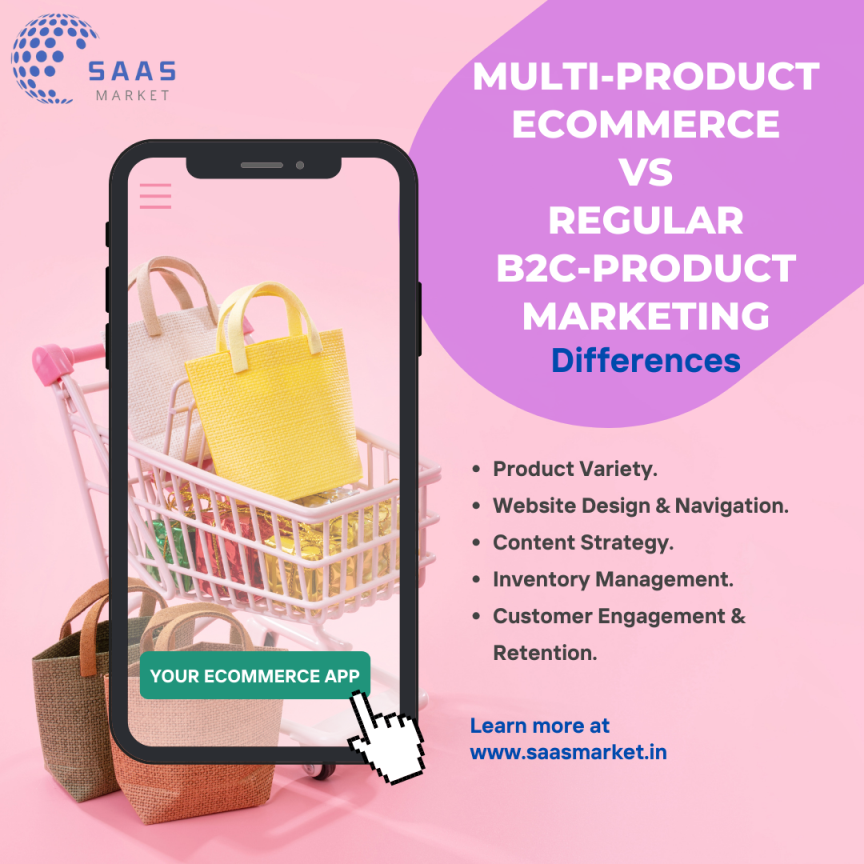Focuses on: Ecommerce Marketing Strategy
In today’s competitive digital landscape, implementing a robust ecommerce marketing strategy is crucial for driving growth and staying ahead of the competition.
This comprehensive guided blog post outlines the essential steps to effectively market an ecommerce website that caters to multiple product categories within a niche market.
Ecommerce Definition
Ecommerce refers to the buying and selling of goods and services over the internet.
It enables businesses and consumers to conduct transactions digitally, facilitating convenience, efficiency, and global reach.
Ecommerce encompasses various platforms, including online marketplaces, websites and mobile apps.
Ecommerce Marketing Strategy Steps
Understanding Your Target Audience
- Conduct thorough market research to identify your target audience’s demographics, preferences, and behavior.
- Utilize analytics tools to gather insights into customer interactions with your website and products.
- Segment your audience based on various factors such as age, location, interests, and purchase history.
Optimizing Your Ecommerce Website
- Ensure your website is user-friendly, mobile-responsive, and optimized for search engines.
- Implement clear navigation, intuitive product categorization, and streamlined checkout processes.
- Optimize product pages with high-quality images, detailed descriptions, and customer reviews to enhance user experience and encourage conversions.
Content Marketing Strategy
- Develop a content marketing plan that includes blog posts, videos, infographics, and other engaging content to attract and engage your target audience.
- Create valuable and informative content that addresses the pain points and interests of your audience while subtly promoting your products.
- Leverage social media platforms to distribute your content and drive traffic to your ecommerce website.
Leveraging Paid Advertising
- Utilize pay-per-click (PPC) advertising – Performance Marketing on platforms like Google Ads and social media channels to increase visibility and drive traffic to your ecommerce site.
- Develop targeted ad campaigns based on keywords, demographics, and User Interests to reach your ideal customers.
- Monitor and analyze ad performance metrics to optimize campaigns for maximum ROI.
Email Marketing Campaigns
- Build and segment your email list to deliver personalized and targeted email campaigns.
- Create compelling email content, including promotional offers, product recommendations and curate content to nurture leads and drive sales.
- Implement automation tools to send triggered emails based on customer behavior, such as abandoned cart reminders and follow-up emails.
Building Customer Trust and Loyalty
- Offer exceptional customer service and support to build trust and credibility with your audience & Increase Brand Value (Business Branding)
- Encourage customer reviews and testimonials to showcase social proof and reinforce your brand’s reputation.
- Implement loyalty programs, referral incentives, and exclusive offers to reward repeat customers and encourage brand advocacy.
Implementing Search Engine Optimization (SEO)
- Conduct keyword research to identify relevant search terms related to your products and niche market.
- Optimize your website’s on-page elements, including meta tags, headings, and product descriptions, to improve search engine visibility.
- Create high-quality, SEO-friendly content that addresses common queries and provides value to your audience. These are all the activities which comes under SEO Practices / Trends.
Product Listing In Ecommerce Website
In ecommerce, product listing is crucial for showcasing goods effectively. It involves presenting items with detailed descriptions, high-quality images and accurate pricing.
Organized categorization, SEO Optimization and customer-friendly navigation enhance visibility and drive sales.
Product listings serve as digital storefronts, attracting and engaging potential buyers in the online marketplace.

Difference between Multi Product Ecommerce Marketing vs Regular b2c Product Marketing
Product Variety
In regular B2C product marketing, the focus may be on promoting a single product or a limited product range.
In contrast, ecommerce marketing for multiple products involves showcasing a wide variety of products, each with its unique features, benefits, and target audience.
Website Design and Navigation
Ecommerce marketing requires an intuitive Website Design and navigation structure to accommodate multiple product categories and facilitate easy browsing and shopping.
In contrast, regular B2C product marketing may focus more on highlighting specific product features and benefits on a simpler website layout.
Content Strategy
Ecommerce marketing typically involves creating diverse content types such as product descriptions, category pages, buying guides, and customer reviews to cater to various buyer personas and address their specific needs and concerns.
In contrast, regular B2C product marketing may rely more on promotional content and brand storytelling to create emotional connections with consumers.
Inventory Management and Fulfillment
Ecommerce marketing for multiple products requires efficient inventory management and fulfillment processes to ensure the availability of products, accurate order processing, and timely delivery.
Regular B2C product marketing may not involve the same level of logistical complexities.
Customer Engagement and Retention
Ecommerce marketing often involves implementing personalized marketing strategies, such as emails, Marketing Automation, retargeting campaigns, and loyalty programs, to engage customers throughout their buying journey and encourage repeat purchases.
In contrast, regular B2C product marketing may focus more on acquiring new customers through traditional advertising channels.
Conclusion
By implementing these proven ecommerce marketing strategy steps, you can drive growth, increase online sales, and establish a strong presence in your niche market.
Continuously monitor and adapt your strategies based on analytics and customer feedback to ensure long-term success.
Consult SaaS Market LLP Team for Support:
